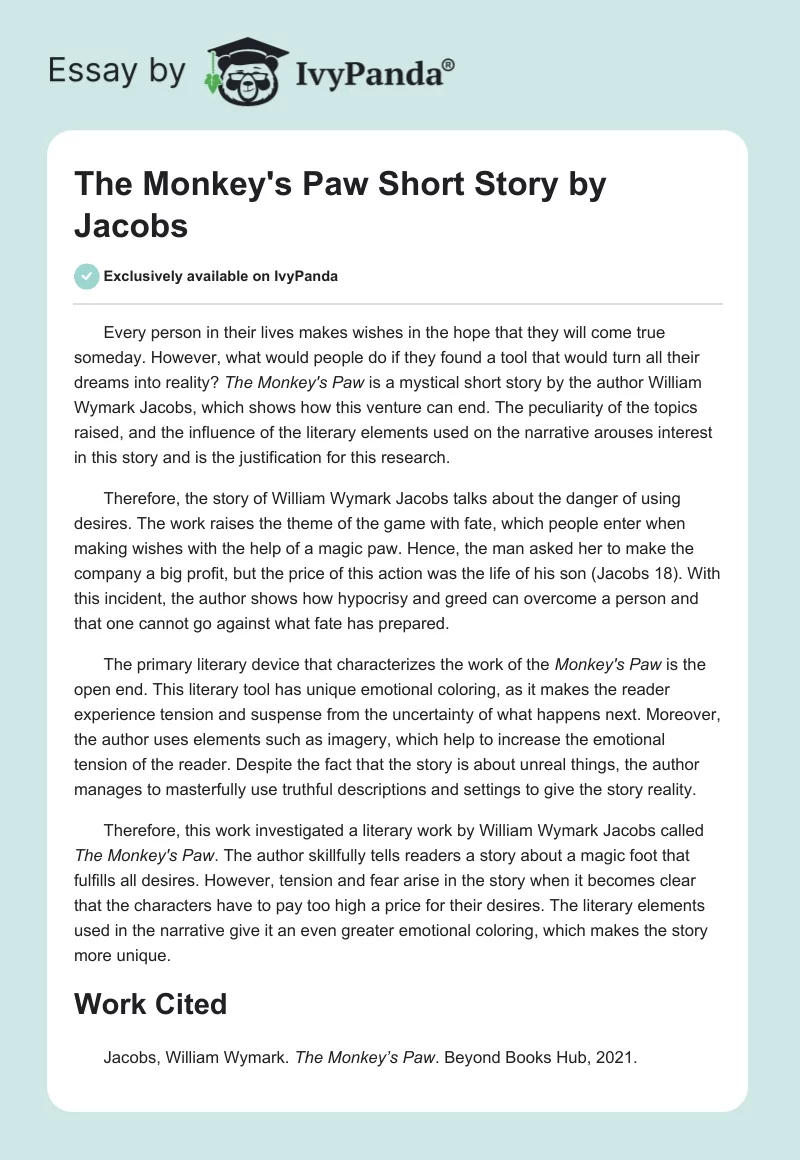Every person in their lives makes wishes in the hope that they will come true someday. However, what would people do if they found a tool that would turn all their dreams into reality? The Monkey’s Paw is a mystical short story by the author William Wymark Jacobs, which shows how this venture can end. The peculiarity of the topics raised, and the influence of the literary elements used on the narrative arouses interest in this story and is the justification for this research.
Therefore, the story of William Wymark Jacobs talks about the danger of using desires. The work raises the theme of the game with fate, which people enter when making wishes with the help of a magic paw. Hence, the man asked her to make the company a big profit, but the price of this action was the life of his son (Jacobs 18). With this incident, the author shows how hypocrisy and greed can overcome a person and that one cannot go against what fate has prepared.
The primary literary device that characterizes the work of the Monkey’s Paw is the open end. This literary tool has unique emotional coloring, as it makes the reader experience tension and suspense from the uncertainty of what happens next. Moreover, the author uses elements such as imagery, which help to increase the emotional tension of the reader. Despite the fact that the story is about unreal things, the author manages to masterfully use truthful descriptions and settings to give the story reality.
Therefore, this work investigated a literary work by William Wymark Jacobs called The Monkey’s Paw. The author skillfully tells readers a story about a magic foot that fulfills all desires. However, tension and fear arise in the story when it becomes clear that the characters have to pay too high a price for their desires. The literary elements used in the narrative give it an even greater emotional coloring, which makes the story more unique.
Work Cited
Jacobs, William Wymark. The Monkey’s Paw. Beyond Books Hub, 2021.

